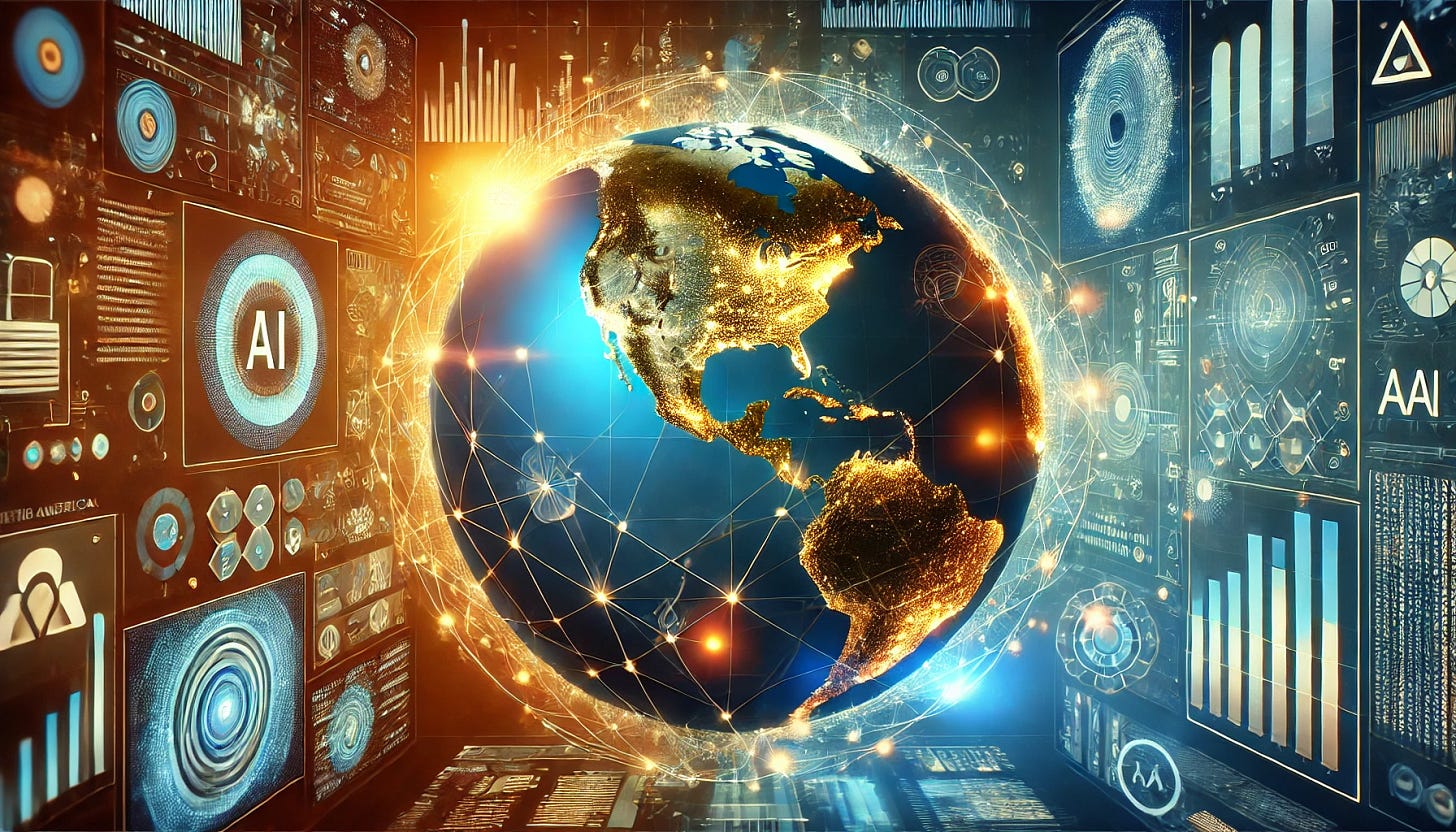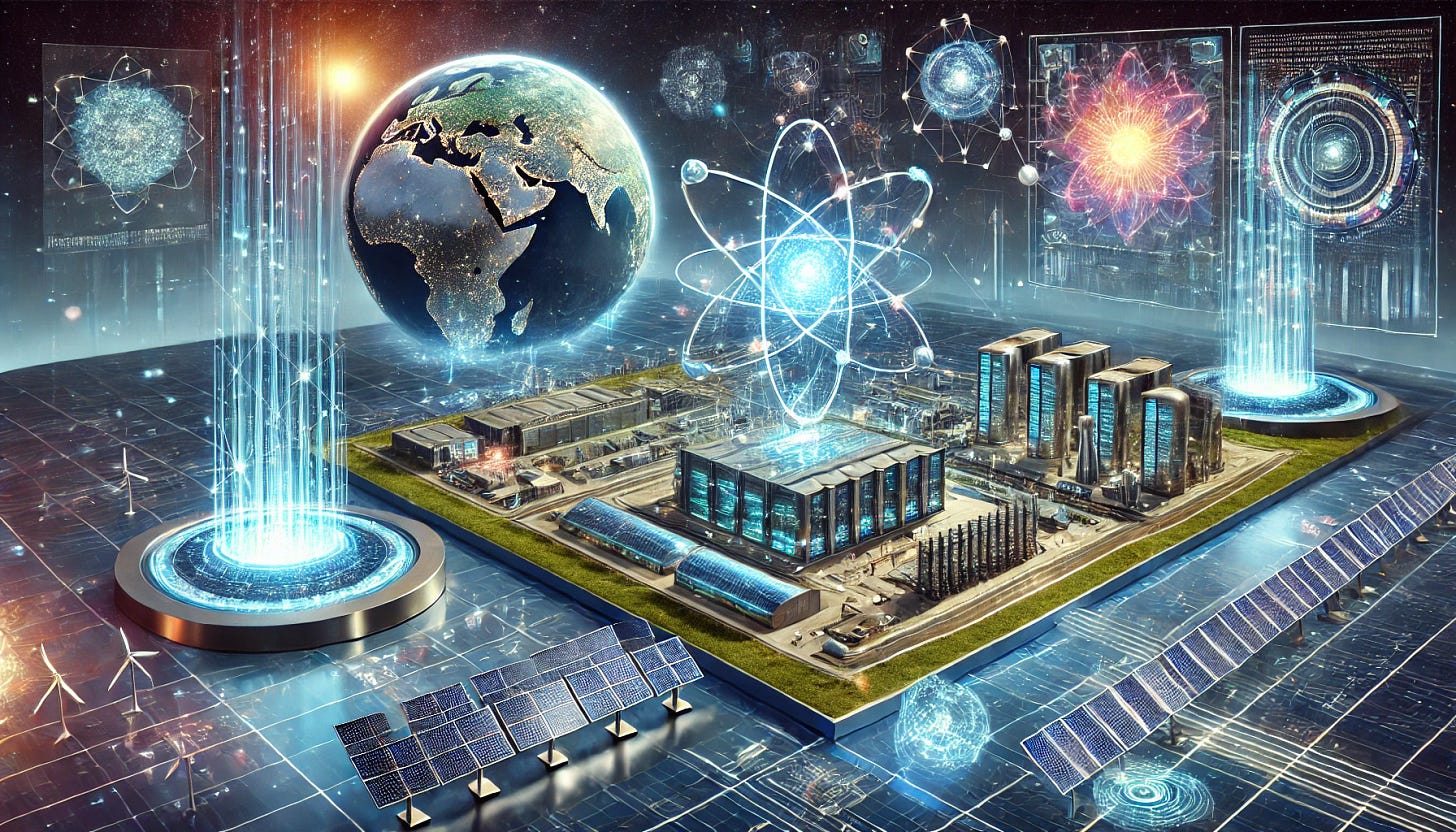The Stargate Initiative: America’s $500B Bet on the AI Future
The Stargate Initiative: A $500B leap into AI’s future—America’s bold move to lead in innovation, sustainability, and global transformation.
A Vision Worth $500 Billion
What if I told you we’re standing at the threshold of a technological revolution so profound it will rewrite the rules of civilisation as we know it? The Stargate Initiative isn’t just a project—it’s a calling. With $500 billion in committed resources, led by SoftBank and OpenAI, this audacious endeavour promises to establish the most advanced AI infrastructure the world has ever seen.
In a White House announcement on Tuesday, President Trump unveiled the ambitious Stargate project, describing it as “the largest public-private partnership in history” aimed at securing America’s technological future. However, the announcement was quickly challenged by Elon Musk, who chairs Trump's government efficiency board. On his social platform X, Musk claimed the companies "don’t actually have the money," specifically targeting SoftBank’s financial capacity. OpenAI CEO Sam Altman responded diplomatically, praising Musk as "the most inspiring entrepreneur of our time" while firmly refuting his claims about funding and reaffirming the project’s financial integrity.
But this isn’t just about tech—it’s about humanity taking a leap into Terra 2.0, a future where we harmonise artificial intelligence, clean energy, and our shared ambitions for a sustainable, interconnected world.
This post explores why the Stargate Initiative is more than just a bold name. It’s the start of something extraordinary, a game-changing alignment of innovation, resources, and vision to shape the future of humanity.
The Next Manhattan Project: A New Era of Innovation
When America decides something matters, history shifts. We’ve seen it before with the Manhattan Project, which unlocked the power of nuclear energy and redefined the course of science and geopolitics. We saw it again with NASA’s moonshot challenge, where Kennedy’s vision inspired a generation to achieve the seemingly impossible. Now, the Stargate Initiative is poised to join these ranks, standing as a testament to the power of focused ambition and collective will.
But unlike its predecessors, the Stargate Initiative is not confined to a singular objective or moment in time. It aims for something much broader: building the infrastructure to fuel artificial general intelligence (AGI) and redefine human capability on a planetary scale. This project is about creating a foundation for solving humanity’s most complex challenges—climate change, global health crises, resource scarcity, and education inequity—through the boundless potential of advanced AI systems.
Picture this: billions of "virtual Einsteins," each with the cognitive capacity to tackle problems in medicine, physics, engineering, and governance, working tirelessly and simultaneously. One Einstein gave us the theory of relativity, revolutionising our understanding of the universe. Now imagine multiplying that ingenuity a billionfold. The infrastructure Stargate is building has the potential to unlock this level of transformative power.
This isn’t just about acceleration; it’s about exponential leaps forward. By investing in cutting-edge technologies such as NVIDIA’s GPUs, Oracle’s cloud systems, and Microsoft’s scalable Azure platform, the initiative is crafting an ecosystem that will enable AI to work at levels previously unimaginable. From predictive healthcare to personalised education to breakthroughs in renewable energy, the possibilities stretch as far as human imagination allows.
Moreover, like the Manhattan Project or the Apollo Programme, Stargate carries a sense of national pride and urgency. It is a declaration that the United States intends to lead the AI revolution, not just for economic advantage but to set a global standard for how technology can elevate human civilisation. With AGI on the horizon, the Stargate Initiative could become the defining achievement of our time—an era-defining moonshot for a digitally interconnected age.
The scope of this project invites us all to consider the broader implications. How will this technology reshape our lives, our economies, and our collective future? The Stargate Initiative doesn’t just aim to answer these questions—it intends to write the blueprint for a new era of human and technological collaboration.
Why the Stargate Initiative Is a Geopolitical Game-Changer
David Shapiro (𝕏 @DaveShapi) captured it perfectly when he said:
“World War 3 just became obsolete before it even started. The first world wars were won with steel and manufacturing. The Cold War was all about nukes and economics. But this war? It’s already over, and America won it with silicon and algorithms.”
The Stargate Initiative positions America as the leader in the next technological age, creating an insurmountable lead in AI infrastructure and capabilities. With its expansive network of data centres, cutting-edge GPUs, and clean energy solutions, this project secures national sovereignty over critical AI systems while setting the stage for global leadership in innovation. The sheer scale of investment—$500 billion—sends a clear message: America is not just participating in the AI race; it’s redefining its rules.
China’s IT infrastructure, by comparison, risks becoming a relic of the past. While Beijing has made substantial investments in AI, the Stargate Initiative effectively shifts the playing field. By anchoring AI development in domestic infrastructure and leveraging partnerships with industry leaders like NVIDIA, Oracle, and Microsoft, the United States is ensuring that its systems are not only faster and smarter but also more secure and reliable. This move reshapes the balance of global power, with AI as the new cornerstone of geopolitical influence.
In this context, the Stargate Initiative is not merely a technological endeavour—it is a strategic gambit to redefine global leadership. The implications go beyond economics and innovation; they extend into diplomacy, security, and the very fabric of international relations. As America builds its next-generation AI infrastructure, it does so with an understanding that the future will belong to those who control the tools that shape it.
The Technological Powerhouse Behind the Stargate Project
As predicted, social media is already buzzing. The moment Elon Musk and Sam Altman started publicly sparring about AI on X, the internet lit up with a flurry of debates. People began choosing sides, asking, “Which team are you on?” For me, the answer is simple:
I’m with Team AGI—and, by extension, e/acc, /dd, and any initiative that accelerates our path toward a Type 1 Civilization. A future where abundance, radical longevity, space exploration, open dialogue, and human upliftment are not just aspirations but realities. Let’s build that future together.
But make no mistake—this isn’t a solo act; it’s a symphony of collaboration. The Stargate Initiative unites some of the most powerful players in the tech world, each bringing unique expertise to the table:
SoftBank, led by Masayoshi Son, provides financial leadership, ensuring the project’s $500 billion vision is realised through strategic capital allocation and global investment networks.
OpenAI, under Sam Altman, drives the operational roadmap, building and deploying the transformative AI systems that will power the Stargate infrastructure.
Oracle contributes its expertise in cloud computing and data centre design, creating facilities that house cutting-edge hardware and support high-performance AI workloads.
NVIDIA, led by Jensen Huang, delivers the advanced GPUs and chip technologies critical to the computational power required for AGI.
Microsoft, through Azure, ensures scalability, security, and connectivity, offering the infrastructure needed to support the evolution of AI at unprecedented speeds.
Arm, a SoftBank subsidiary, provides chip architecture, enabling efficiency and innovation at the hardware level for the AI systems deployed.
xAI/Tesla, although not directly involved in the core partnership, shapes the conversation with Elon Musk advocating for alternative approaches to AI safety and governance.
Anthropic, while not a formal participant in the Stargate Initiative, contributes significantly to the broader AI landscape by emphasising the ethical and responsible development of advanced AI systems that prioritise long-term human alignment.
Together, these organisations are crafting the foundation of an entirely new technological epoch. But beyond their individual contributions lies something more significant: the unprecedented synergy of private-sector innovation, public ambition, and a shared belief in the transformative potential of AI.
This project is not just about data centres or infrastructure—it’s about setting the stage for humanity’s next leap forward. Every server, every GPU, and every algorithm is a step closer to unlocking a future of interconnected intelligence, economic abundance, and exploration that transcends borders, industries, and even our planet.
The Stargate Initiative is not just an investment in technology; it’s an investment in humanity’s potential. And as the debate between figures like Musk and Altman rages on, let’s remember the bigger picture: this isn’t about teams or rivalries—it’s about building a better future for us all.
Beyond AI: Building a Sustainable and Equitable Future
At its core, the Stargate Initiative aligns seamlessly with the Terra 2.0 vision: a future defined by the harmonious integration of technology, sustainability, and human potential. This isn’t about unchecked industrial growth or technological dominance for its own sake; it’s about building responsibly, with a commitment to long-term prosperity for people and the planet.
The initiative prioritises:
Clean energy innovation, leveraging renewable resources such as solar, wind, and emerging technologies to power its AI infrastructure sustainably. By aligning with green energy goals, Stargate sets a new benchmark for how tech projects can actively contribute to combating climate change.
Scalability and efficiency, incorporating innovative cooling systems, modular designs, and energy-saving technologies that minimise environmental impact while maximising performance. These measures ensure the infrastructure can grow without compromising sustainability.
Economic growth, creating thousands of high-tech jobs, revitalising local economies in multiple states, and sparking new industries around AI and renewable energy. This kind of investment lays the groundwork for equitable economic opportunities across regions.
More than just an engineering project, the Stargate Initiative represents a blueprint for how technology can simultaneously drive economic and environmental progress. It’s an example of how bold, forward-thinking innovation can embrace sustainability without sacrificing ambition. By embodying the principles of #LivingTheFuture, Stargate shows us what’s possible when humanity’s collective creativity and responsibility come together to build a better tomorrow.
The Billion-Einstein Paradigm: Redefining Human Capability
David Shapiro’s analogy is compelling: imagine a billion Einsteins working around the clock. The Stargate Initiative aims to shatter humanity’s intelligence bottleneck, providing unprecedented cognitive resources to solve the world’s most pressing challenges.
Here’s what that looks like in practice:
Healthcare revolution: AI diagnoses and treatments at lightning speed.
Scientific breakthroughs: Faster discoveries in fields like climate science, quantum physics, and genetics.
Economic transformation: AGI-driven analysis creating smarter policies and equitable growth.
This is not science fiction; it’s the logical next step in human evolution. The Stargate Initiative is paving the way for Homo Techno—a future where humans and AI collaborate seamlessly to expand our collective potential.
Living the Future: What This Means for You
The Stargate Initiative isn’t just for governments or corporations—it’s for all of us. As we step into this new era, it’s worth reflecting on how we can contribute to this transformation. What role will each of us play in shaping a world where AI serves humanity, promotes innovation, and uplifts society as a whole?
This isn’t just a $500 billion investment. It’s a call to action. A call to dream bigger, build smarter, and embrace the future with intention and purpose. The Stargate Initiative symbolises the potential of what we can achieve when technology and human creativity work hand in hand.
Call to Action
Join the conversation: How do you envision the Stargate Initiative shaping our collective future? Share your thoughts, engage with us on social media, and be part of this transformational movement. Let’s #LivingTheFuture together.
If these ideas resonate, consider subscribing to MyGeekSpace as a paid subscriber to access exclusive content and curated discussions tailored for seekers and explorers. Your support fuels ongoing research and transformative projects that push the boundaries of what’s possible.
For those eager to dive deeper, supporting me on Patreon unlocks behind-the-scenes insights and access to new conversations shaping the future.
For more reflections on AI, visit the AI/ACC section on MyGeekSpace.
Let’s keep the dialogue alive—join me on 𝕏 @frankdasilva for real-time insights and explore my broader work at Frank Da Silva – Living the Future, where consciousness, technology, and transformation intersect.













